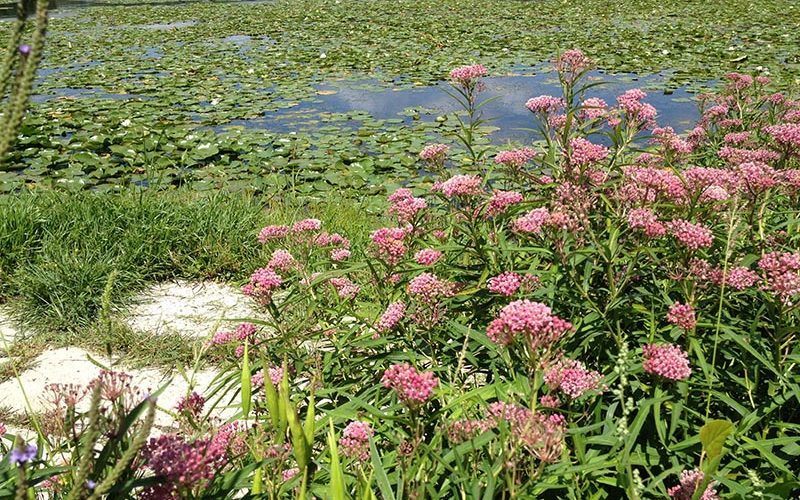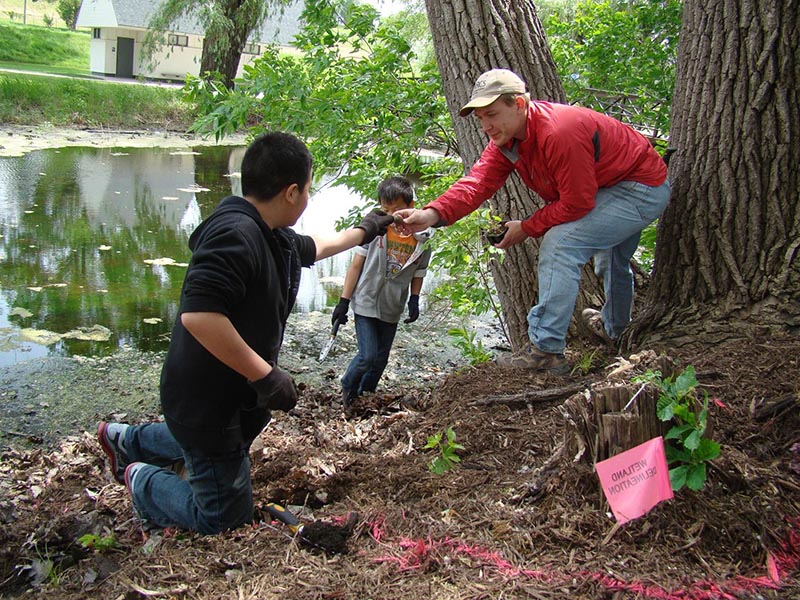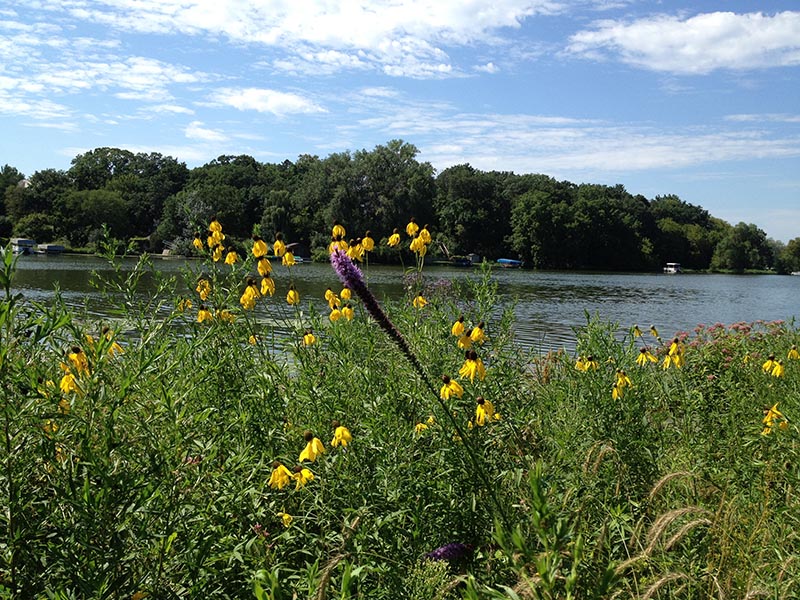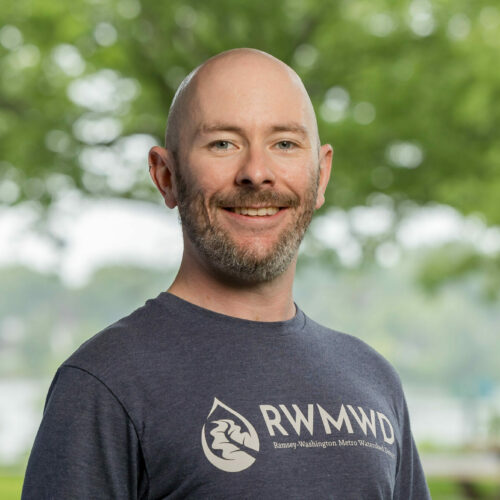


Keller Lake Shoreline
Restoration transformed this unnatural rock shoreline into diverse native plantings.
Today, the restoration areas support more than 75 species of native plants, and invasive weed coverage is minimal. The access points are a popular way for park patrons to enjoy the lake, creating opportunities for fishing, boating, wedding photos, and engaging with the colorful, native shoreline ecosystem.
Overview
The Keller Lake shoreline restoration project, completed in 2012, is part of a comprehensive effort to create high-quality shoreline habitat throughout the Phalen Chain of Lakes. The restoration features two sites – one on the southeast shoreline of Keller Lake near its meeting point with Keller Creek, and another which encompasses the entire shoreline of Keller Park Island.
In the early 1900s, substantial lake dredging activity took place in the Phalen Chain. The dredged sediment was used to create Keller Park Island, now a part of Keller Regional Park. As this island was artificially created, it lacked its own diverse, native plant community, and its shoreline soils were prone to erosion. In the 1980s, galvanized wire baskets filled with rock were placed along thousands of feet of park shoreline to reduce erosion. This approach effectively stabilized the shoreline but was unsightly and created little habitat value. Soon after installation, areas around the rock baskets were colonized by invasive plant species, including common buckthorn, Canada thistle, and reed canary grass.
Work Completed
Between 2010 and 2012, the District, Ramsey County, and the DNR partnered on a project that targeted over 2,000 feet of shoreline for ecological restoration. The initial restoration process involved the removal and control of invasive weeds. To address shoreline erosion in a more visually pleasing way, a soil layer was placed over the rock baskets to promote plant growth, and several rock access points were installed to prevent further erosion from foot traffic.
Following site preparation, a wide variety of native sedges, flowers, grasses, and shrubs were introduced. A majority of these plants came from the Ramsey County Correctional Nursery. Adult volunteers and local school groups assisted with the plantings, allowing them to learn about and participate in ecological restoration.


